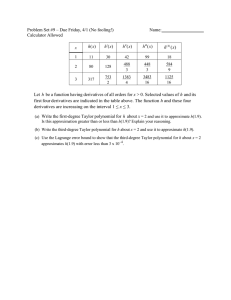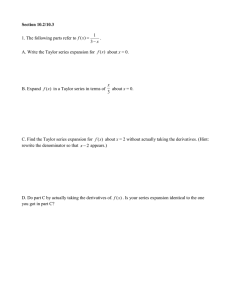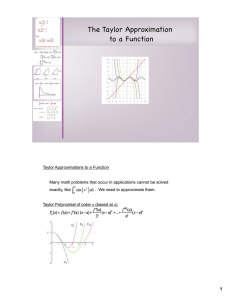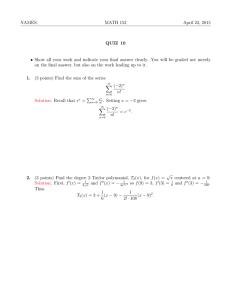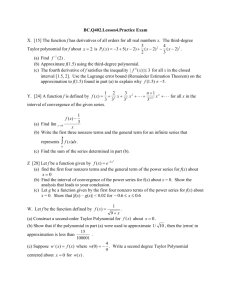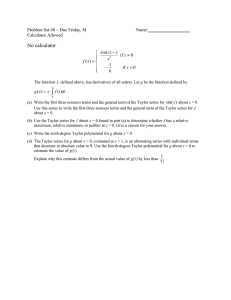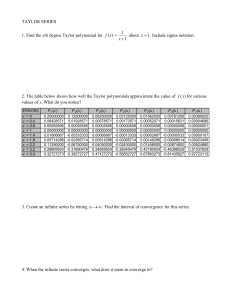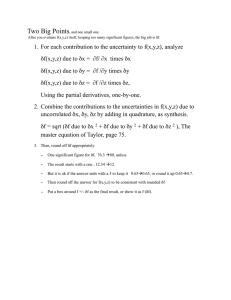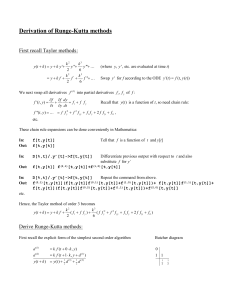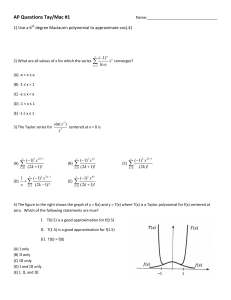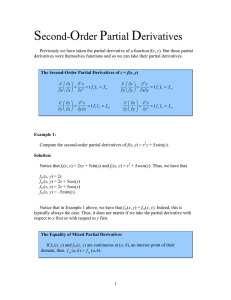Name_____________________________________ Calculus Period____
advertisement
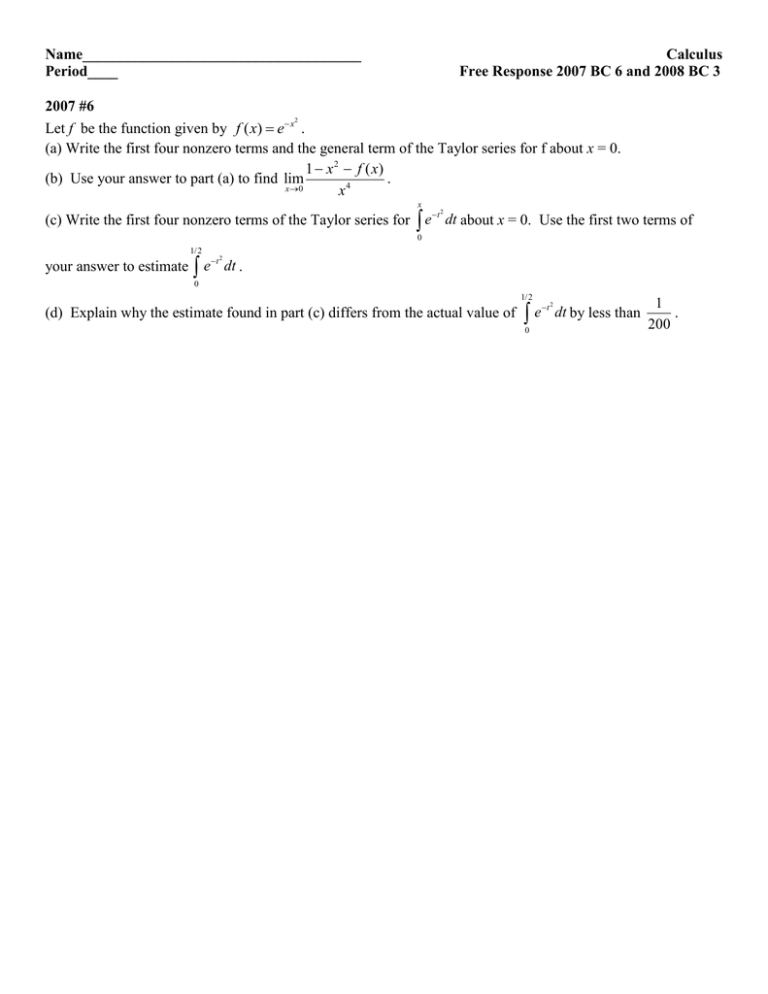
Name_____________________________________ Period____ Calculus Free Response 2007 BC 6 and 2008 BC 3 2007 #6 2 Let f be the function given by f ( x) e x . (a) Write the first four nonzero terms and the general term of the Taylor series for f about x = 0. 1 x 2 f ( x) (b) Use your answer to part (a) to find lim . x 0 x4 x (c) Write the first four nonzero terms of the Taylor series for e t dt about x = 0. Use the first two terms of 2 0 1/2 your answer to estimate t e dt . 2 0 1/2 (d) Explain why the estimate found in part (c) differs from the actual value of e 0 t 2 dt by less than 1 . 200 2008 #3 Let h be a function having derivatives of all orders for x 0 . Selected values of h and its first four derivatives are indicated in the table above. The function h and these four derivatives are increasing on the interval 1 x 3 . (a) Write the first-degree Taylor polynomial for h about x = 2 and use it to approximate h(1.9) . Is this approximation greater than or less than h(1.9) ? Explain your reasoning. (b) Write the third-degree Taylor polynomial for h about x = 2 and use it to approximate h(1.9) . (c) Use the Lagrange error bound to show that the third degree Taylor polynomial for h about x = 2 approximates h(1.9) with error less than 3 104 .
